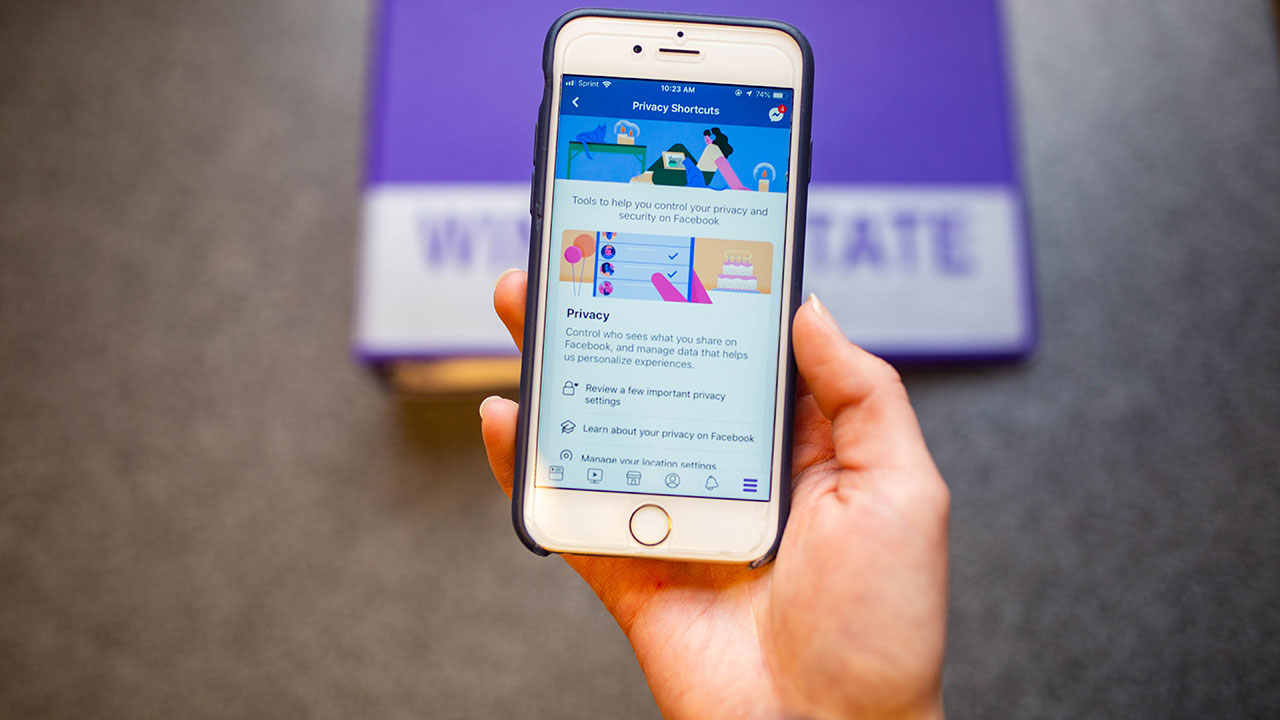It’s 1:30pm and you are sitting in class. You receive a friend request from someone you don’t know, but you accept it. What’s the big deal?
Later that evening you realize this new friend has been liking a lot of your pictures and posts, so you visit their account. After looking through their profile, you realize you have no mutual friends and there is not a lot posted on their account.
While doing your research on this new friend, they send you a direct message asking how your day was and complimenting how you look in your pictures. You feel uncomfortable so you decide to delete this new friend.
But that’ll never happen to you, right? Your friends and followers are people you know, at least you think so. Instead, we should be thinking about how a situation like this could have been avoided.

Photo by Kelsa Katzfey ’21
Here are three tips for staying safe online and how to avoid a situation like this happening to you.
1. Set your account to private
When your account is private, people who do not follow you cannot see your content. By placing your social media account(s) on private, you can control who sees and interacts with the content that you are posting. You might feel a sense of security in knowing that your posts are being seen by only people that you trust and have approved.
2. Meet up in a public space
If you decide to meet someone in person for the first time, maybe you met them on Tinder or Bumble, go to a public place with them. While in public, you are in a safe space to step away if you feel uncomfortable at any point. Go grab coffee with this individual at Mugby Junction or Blooming Grounds. Keep it simple, but safe.
Letting your friends and family know when and where you are meeting this new friend is an extra step that you can take to ensure the best possible outcome. If the meet up is not going the way that you would have liked, you are not only in a public space, but your close friends and family members are aware of your location if anything happens.
3. Do your research
When someone sends you a friend or follow request, check into them before accepting the request. Do the two of you have any mutual friends? Do they have a lot of followers? How many posts do they have? By answering these questions, you are analyzing whether or not this account is fake.
Accepting follower or friend requests only from those you have personally met can be a great rule of thumb to make sure you have maximum safety on your profile.
What do you do online to protect yourself? Do you take any precautions? Have you ever been placed in an uncomfortable position as a result of an interaction you had online?
It’s important to know the dangers that can happen online. If you have a story you would like to share about a similar experience you have had, stop by the gazebo on campus on Monday, April 1 from 10am – 12pm to talk with two representatives who are spreading awareness about these dangers. Your story can be included in a video project to spread awareness of the possible dangers that social media may bring.
– Co-written by Carly Sylvester ’20 & Erin Kloepping ’19